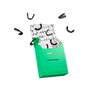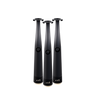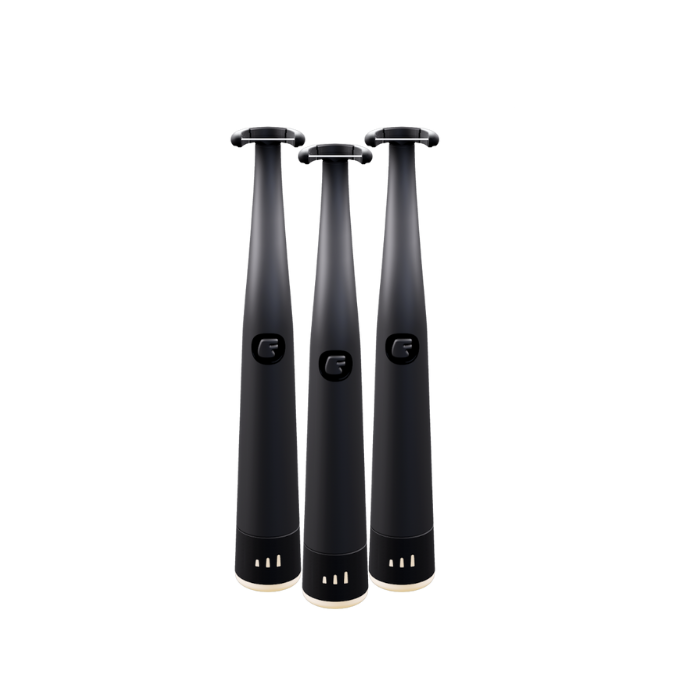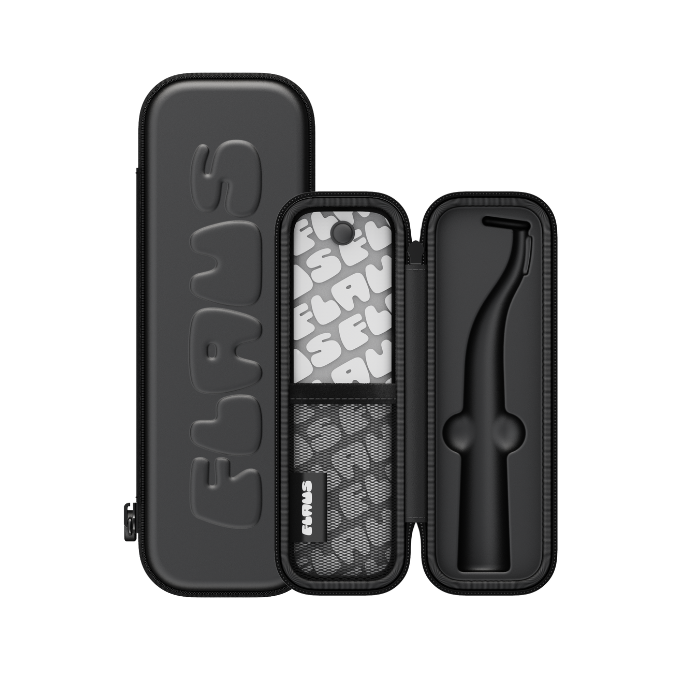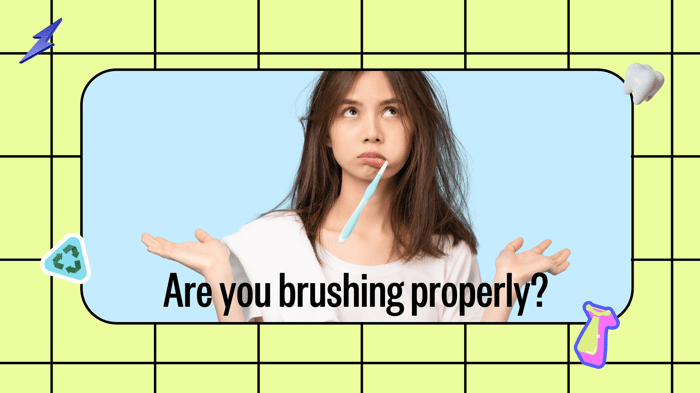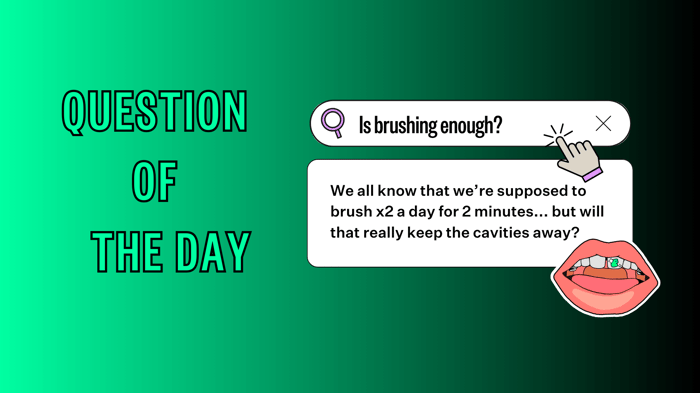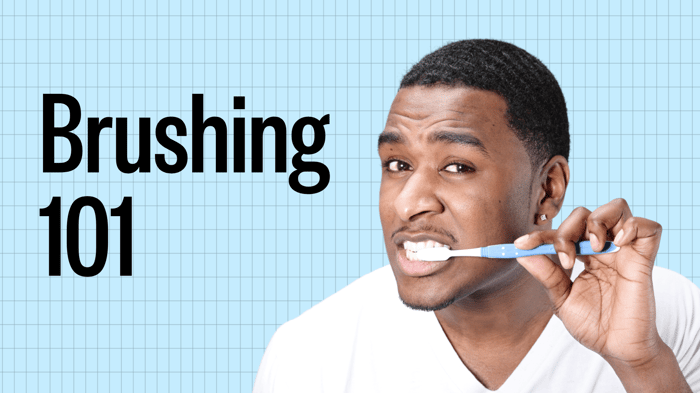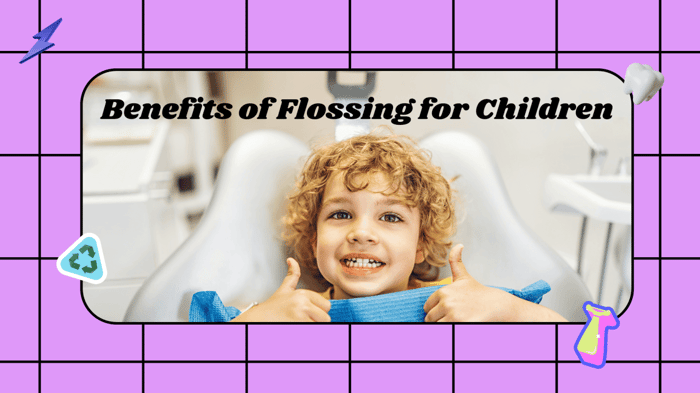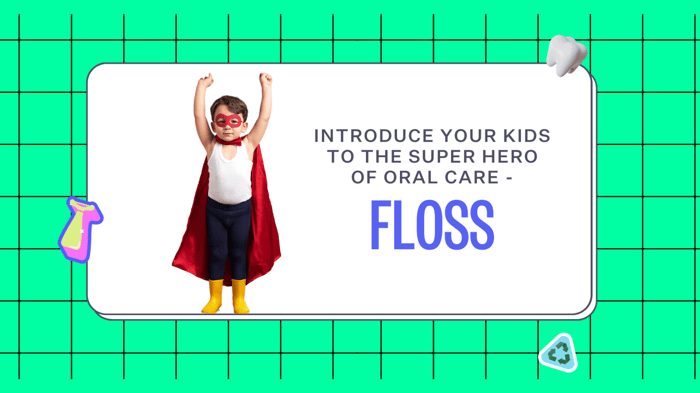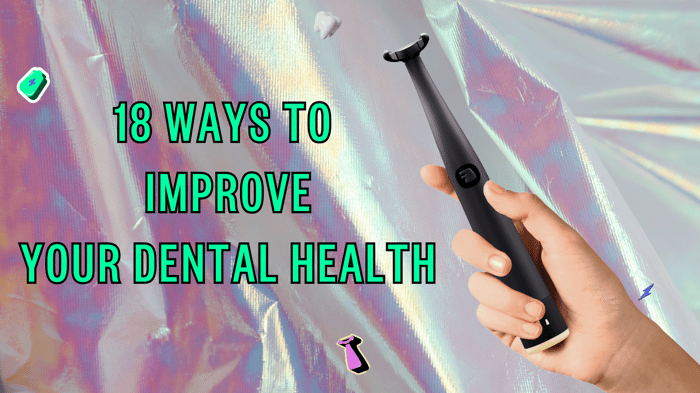Ever wonder about how to brush your teeth properly? To get keep those pearly whites healthy, brushing your teeth twice a day is absolutely essential. Citing the American Dental Association, these brushing sessions are best placed in the morning and before bed to effectively remove plaque and prevent cavities from forming. It's also advisable to wait for at least 30 minutes after consuming acidic foods or drinks before grabbing your toothbrush. This may seem surprising but it helps protect your enamel from eroding.
To brush your teeth properly, position your toothbrush at a 45-degree angle to the gums and use gentle circular motions. Be sure to brush all surfaces of the teeth, including the outer, inner, and chewing surfaces. Remember to also brush your tongue to remove bacteria and keep your breath fresh.

The Frequency of Brushing Your Teeth
The American Dental Association (ADA) suggests brushing our teeth at least twice a day—once in the morning and once before going to bed. This practice helps to keep plaque at bay throughout the day and overnight, preventing cavities. The morning routine acts as a refresh button, clearing the build-up from the night before, while brushing before bedtime cleans away food particles and plaque accumulated during the day.
It's essential to consider when you brush. You might not know this, but there's an important reason why brushing just after eating isn't always a good idea.
It's advisable to wait at least 30 minutes after having acidic foods or drinks before brushing. This includes things like citrus fruits, juices, and sodas. The acids in these foods and drinks make your tooth enamel softer, which can be worn down by immediate brushing. Waiting allows your saliva to naturally neutralize the acid, making your teeth stronger and less vulnerable to damage.
Recap: How To Brush Your Teeth Properly
- Brush at least twice a day, in the morning and before bed
- Wait at least 30 minutes after consuming acidic foods or drinks before brushing
Imagine this: You've just finished enjoying a refreshing glass of orange juice, thinking you're doing something good for your health. Then you immediately pick up your toothbrush thinking you're taking good care of your teeth. But in reality, if you brush right away, you could actually be causing harm. It's like trying to wipe off spilled ink using a soft tissue paper—it's just not going to work and might end up making a bigger mess. The 30-minute waiting period gives your mouth time to recover from the acidic onslaught and regain some of its strength.
By understanding how often and when to brush your teeth, you are effectively taking the necessary steps toward maintaining good oral health. This simple shift in brushing habits can make a significant difference in protecting your teeth from decay and erosion, ultimately contributing to a brighter smile!
Understanding the importance of oral hygiene habits is crucial for maintaining healthy teeth. Now let's delve into an aspect equally important—selecting the right kind of toothbrush for your dental needs.
Selection and Types of Toothbrushes
Your toothbrush is like a superhero, fighting off the evil plaque and bacteria in your mouth. But every superhero has a sidekick, and for your toothbrush, it's the type of toothbrush you choose. When it comes to picking a toothbrush, it's not just about your favorite color or a fancy design; you want something that gets the job done right.
Here are some factors to consider when selecting a toothbrush:
Size and Shape
The size of the brush head matters. You want it to reach every nook and cranny in your mouth. If it's too big, it might not clean those hard-to-reach spots at the back of your mouth. Look for a brush head that can comfortably fit in your mouth and easily access all areas, including the back molars. The shape of the handle also plays a role in how easy it is to grip and control the toothbrush while brushing. You want something that feels comfortable when you hold it.
Bristle Type
Soft-bristled brushes are like a gentle breeze on your teeth and gums. They're effective at removing plaque but won't cause any damage to your enamel or gums. Most dentists recommend soft-bristled brushes for everyday use as they are tough on plaque but gentle on your pearly whites.
Manual vs. Electric
One of the big decisions is choosing between a manual or an electric toothbrush. Manual toothbrushes have been around forever, but electric toothbrushes are quickly gaining popularity. They are known for their efficiency in plaque removal due to their oscillating or rotating heads. People with limited mobility or dexterity issues may find electric toothbrushes easier to use. They can be especially helpful for those with dental braces or other orthodontic appliances.
Remember, what works for one person might not work for another, so it's essential to choose a toothbrush that feels comfortable and effective for you.
Let's take Jake, for instance. He loves his electric toothbrush because the oscillating motion of the bristles makes him feel like he's getting a deep clean every time.
Given these variables involved in choosing a toothbrush, make sure to consult with your dentist on what type is best suited for you based on your unique dental needs. After all, they're the true superheroes when it comes to knowing what's best for your teeth!
Now that we've explored the critical components of proper dental hygiene, let's delve into the significant facets of selecting the perfect toothpaste.
Deciding on the Right Toothpaste

It's easy to feel overwhelmed by the numerous kinds of toothpaste available at the store, each claiming to offer different benefits. Selecting the right toothpaste isn't just about picking whatever looks good on TV commercials; it's about finding the one that suits your unique dental needs. Let's break down the key components and features you should consider when making this crucial decision.
Fluoride: It protects them from decay by making the enamel stronger and even reversing early signs of decay. When choosing toothpaste, ensure it contains fluoride to give your teeth some extra armor against cavities.
Sensitivity Relief: Some people face discomfort when consuming hot or cold foods due to sensitive teeth. If that's you, look for a toothpaste specially designed for sensitive teeth. These toothpastes gently desensitize nerve endings to help alleviate any discomfort, allowing you to enjoy your favorite foods without worrying about sharp pain.
Whitening Power: If you're keen on having those pearly white teeth, opt for a whitening toothpaste. These contain mild abrasives or polishing agents that scrub off surface stains from beverages like coffee, tea, and wine. Remember, whitening toothpaste will primarily work on surface stains and won't drastically change the color of your teeth.
It's essential to keep in mind that no single toothpaste can address all these concerns. You may find yourself using different toothpastes at various times to achieve well-rounded dental care based on what your current oral health goals are. In all cases, be sure to check the packaging or consult your dentist if you need advice on which toothpaste is best suited for you.
Understanding your own dental needs is crucial when choosing a toothpaste. Rather than seeking immediate miraculous results, consistency in using the right toothpaste over time will yield significant long-term benefits for your oral health.
Armed with a clear understanding of what different types of toothpaste offer, you can now make an informed choice that aligns with your specific dental requirements and contributes positively to your oral hygiene routine.
Correct Methods for Teeth Brushing
Brushing is not just about making your teeth look clean and shiny; it's also about clearing out all those tiny bits of food and harmful bacteria that can be very detrimental. You'll be proud of that sparkling smile and healthy mouth when you know you're brushing the right way.
What's the perfect way to hold your toothbrush? Well, the magic number is 45 degrees. That means you angle it halfway between straight up-and-down and parallel to the floor. This allows the bristles to reach deep under the gumline where tiny pieces of food might hide and cause trouble later on.
Proper Technique
So, when you're ready to get brushing:
- Position your toothbrush at a 45-degree angle to your gum line.
- Use gentle, circular motions to clean the front, back, and chewing surfaces of your teeth.
- Make sure you brush for at least two minutes so you can be certain you've cleaned all the places bacteria like to hide.
Hey, did you know a lot of germs like to hang out on your tongue too? So yes, as weird as it might seem, we also need to remember to gently brush our tongues.
Brushing Your Tongue
- Use soft strokes when brushing your tongue. This will help remove bacteria that can lead to bad breath.
- Regular tongue cleaning not only makes your breath feel fresher but also reduces the risk of bacterial growth in your mouth.
A quick note: While it's great to be thorough, be careful with how firm you are while brushing. You might think pressing down hard will clean better—but actually, using too much pressure can damage both your gums and the enamel on your teeth.
Avoiding Excessive Pressure
- If you apply too much pressure when brushing, it can hurt our gums and wear away our enamel—the tough outer layer of our teeth.
- Instead of focusing on force, just use a light touch which can still get rid of all those germs without doing any damage.
We've covered everything from the right technique for holding your toothbrush to cleaning your tongue and avoiding excessive pressure. Now, let's move on to some other important steps for maintaining good dental hygiene.
The Art of Flossing
Flossing (or Flausing) often gets overlooked in favor of its more glamorous cousin, tooth brushing, but it plays an equally vital role in maintaining clean and healthy teeth. When done properly and consistently, flossing helps remove food particles and plaque from between the teeth and under the gumline, where your toothbrush can't reach. Plus, who doesn't like that fresh, clean feeling after a thorough flossing session?
Correct Flossing Technique
Let's get this straight from the get-go: correct flossing technique is crucial to reaping all the benefits of flossing. It's not just about shoehorning a piece of string between your teeth; there's a method to it.
Slide the floss between teeth using a gentle back-and-forth motion. As you curve the floss against each tooth, be careful to slide it under the gumline to remove plaque and debris lingering there. Essentially, you want to embrace each tooth like you would when hugging a friend – with care and precision.
The "sawing" or snapping motion might seem quicker, but it can end up hurting your gums and leaving plaque behind in undisturbed places. Taking it slow and gentle is always best when it comes to flossing.
When you put this careful approach into practice along with regular dental check-ups and professional cleanings, you're less likely to develop cavities and gum disease which are a big win for both your pearly whites and your wallet.
Think of flossing as a knight on a quest through a forest, reaching every corner and crevice in search of hidden enemies (plaque and food particles). Every swipe beneath the gumline is like saving a captive from a castle's dungeon, freeing your teeth from potential decay!
Flossing Frequency
We know it can be tempting to skip the floss after a long day... but don't give in! Floss at least once a day — preferably before brushing your teeth at night — to effectively remove plaque and food particles from between the teeth.

For those of us who are simply negligent flossers - we might need something that makes flossing easy and comfortable - like an electric flosser! A great alternative to traditional flossing are electric flossers, like Flaus.
Electric flossers are a great way to maintain good oral hygiene, and Flaus is a good option for those looking for an eco-friendly and effective electric flosser. Here are some reasons why using an electric flosser is a great alternative to traditional flossing:
- Easy Reach: They can reach tight spaces and molars easily due to the ergonomic handle
- Easy to use: Electric flossers are easy to use and require less manual dexterity than traditional flossing
- Comfortable: They can also be less messy and more comfortable to use than string floss, as you don't have to put your fingers in your mouth
- Encourages good habits: Many people find electric flossers more enjoyable to use than traditional floss, which can encourage them to floss more regularly
- Eco-friendly: Flaus is the world's first eco-friendly electric flosser, which can reduce waste and help protect the environment. Flaus uses 90% less floss than traditional flossing and offers a Flaus head recycling program to ensure that the floss heads are properly recycled at a dedicated oral care recycling facility.
Some of the features that Flaus has include:
- Sonic vibrations: At 18,000 sonic vibrations/min, Flaus moves quickly and easily between tight teeth to massage gums and remove plaque and debris from tight spaces your toothbrush can’t reach.
- Ergonomic Soft Touch Handle: With a design that feels as familiar as your favorite electric toothbrush, Flaus′ premium, ergonomic soft-touch handle gives you full control over hard-to-reach places while keeping your fingers (and the 10 million bacteria that live on them) out of your mouth.
- Waterproof: Whether you are flossing on the go or multi-tasking in the shower, Flaus is waterproof and has you covered.
- High Performing Floss Heads: Floss heads are fitted with high performing glide floss strong enough for the tightest of teeth, made with recyclable plastic and use 30% less plastic than traditional floss picks. You can also recycle your Flaus heads through a Floss Head recycling program where the floss heads are sent to be recycled in a dedicated oral care recycling facility.
- Two Month Battery Life: The rechargeable flosser has a two month battery life and comes with a charging base and USB cable to boot.
- Dentist Designed and Recommended: Flaus was designed with dental experts from day one to ensure the very best clean.
Overall, electric flossers, like Flaus, can be a great way to maintain good oral hygiene and develop / encourage good habits. They are effective, easy to use, and eco-friendly, making them a good option for those looking for an alternative to traditional flossing.
All About Regular Dental Check-ups

Regular dental check-ups serve as a safety net for your oral health. They're not just about getting your teeth cleaned; these visits ensure that any potential problems are caught early and treated before they become bigger issues.
Think of it like this: You take your car for regular service to keep it running smoothly and avoid big, expensive repairs down the line. Similarly, visiting your dentist every six months is like giving your teeth a tune-up. The dentist can spot small problems before they turn into big ones, potentially saving you a lot of pain and money.
During these check-ups, your dentist focuses on three main things: preventive care, diagnosis, and treatment.
Preventive Care
When you're at the appointment, your dentist or hygienist will thoroughly clean your teeth, removing any built-up plaque or tartar. This prevents gum disease and cavities from developing.
Diagnosis
Your dentist will examine your mouth for signs of tooth decay, gum disease, and other issues. X-rays may also be taken to get a clearer picture.
Treatment
If any issues are identified, your dentist will discuss treatment options with you. They may recommend fillings for cavities, deep cleaning for gum disease, or any other necessary treatments to maintain your oral health.
In addition to keeping an eye out for cavities and other common problems, regular dental check-ups are crucial in catching more serious oral health issues early. Things like oral cancer or periodontal disease can be detected by a professional long before you notice any symptoms.
For instance, during a routine check-up, a dentist might observe changes in the color or texture of the tissues in your mouth that could indicate oral cancer. Detecting it at an early stage increases the chances of successful treatment.
So while you might feel like everything is fine with your teeth, there could be hidden issues only a dentist can detect.
In summary, regular dental check-ups are not just about keeping your pearly whites looking their best. These visits play a vital role in maintaining good oral health by preventing, diagnosing, and treating any potential problems early on. So make sure to schedule those biannual visits!
Dental Hygiene Queries Answered
When it comes to dental hygiene, there's often a lot of confusion and varying advice out there. It's not always easy to know what practices are best for maintaining good oral health. Let's delve into some common questions about taking care of teeth and gums.
Choosing the Right Toothbrush
A frequent dental hygiene query revolves around selecting the right toothbrush. With numerous options in the market, such as soft bristles, hard bristles, electric toothbrushes, and manual toothbrushes, it can be overwhelming. Most dentists recommend using a soft-bristled toothbrush to prevent damage to your teeth and gums. The size and shape should allow you to reach all areas of your mouth effortlessly. Electric toothbrushes can be particularly effective at removing plaque, especially for those who find it challenging to use a manual toothbrush with sufficient dexterity.
Consider this from personal experience: When I switched to an electric toothbrush, my dentist noticed less plaque buildup during my next visit!
Addressing Bad Breath
Another common query pertains to bad breath or halitosis. While occasional bad breath is normal and easily managed with good oral hygiene habits and regular dental checkups, persistent bad breath may indicate underlying dental or medical issues. Brushing your teeth twice a day, flossing daily, and cleaning your tongue can help reduce bad breath. If it persists, it’s always best to consult a dentist who can identify the cause and recommend suitable treatment.
Importance of Flossing
Flossing is another area where many people have questions. The truth is that flossing is just as important as brushing when it comes to preventing gum disease and cavities between teeth. There are different types of floss available, such as the Flaus electric flosser, waxed floss, unwaxed floss, tape floss, and floss picks. The key is finding one that works for you and using it at least once daily.
Some individuals find traditional floss difficult to maneuver and prefer using floss picks or water flossers which are also effective at removing plaque and food particles between teeth.

